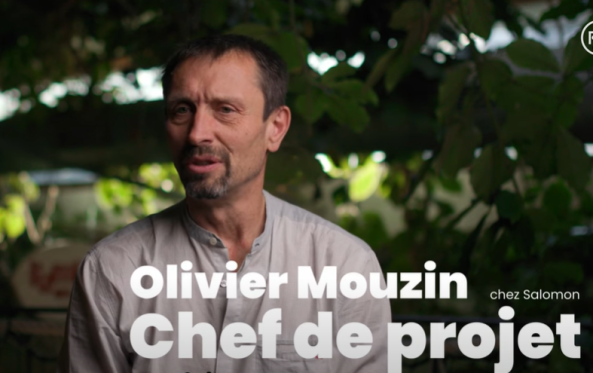
13th edition of Refashion Innovation Challenge
Refashion's Innovation Challenge is back for its 13th edition! Find out more about the call for R&D projects and how to apply!

Refashion's Innovation Challenge is back for its 13th edition! Find out more about the call for R&D projects and how to apply!

Pour la 2ème édition de son appel à projets annuel dédié au réemploi, Refashion soutient 35 projets en France métropolitaine et à La Réunion.|Pour la 2ème édition de son appel à projets annuel dédié au réemploi, Refashion soutient 35 projets en France métropolitaine et à La Réunion.
Project developers: CSR / Project team Partners : Human Resources

Internal awareness-raising and training constitute the starting point for an eco-design initiative. These actions help to overcome possible reluctance and to diffuse a culture of joint responsibility.
Explaining an eco-design approach also enables teams to speak the same language and avoid false good ideas.
Training can take place internally, it is not necessary to call on the services of an external training organisation.
Given that eco-design is a global company initiative, all of the departments are concerned by training.
Complexity of implementation
Estimated economic gain
Human means
Implementation timeframes
Try it! : Follow the sheet step by step and have a go!
Decide on the preferred format of awareness-raising initiatives: which public is targeted? Where and when can we reach out to them ? What is their optimum availability duration?
Develop a structured discourse, adapting it to the target and to the format retained. For example, a one hour breakfast format to remind participants of the stakes of the sector, define eco-design, present impacts and inspiring brands (See tool 1).
Prepare supports : ideally, a short, fun and inspiring presentational support, based on key figures enabling participants to exchange with each other and to think about and express their needs (See tool 2).
Organise a test training session for a few members of personnel. Ask these personnel for feedback on the test training session (duration, support, content…) to adapt it where needs be. Potentially repeat this operation.
Organise one or several training sessions. Remember to log the number of sessions and the list of participants.
At the end of the training session, allow for a time of free exchange to invite participants to report back on existing actions, ideas for future actions and their desire to commit.
Formalise a process to compile ideas for future actions and maintain a link with the persons having expressed a desire to commit at the end of the training session.
Clarify training supports by adding more specific content according to the needs expressed and noted during the sessions (materials, end-of-life, manufacturing…) and organise additional sessions (See tool 3).
Create a training monitoring document (theme, format, date, commitments made, objections).
Conduct an annual assessment and align the actions put in place over the year or the season with training sessions carried out.
Number of training sessions.
Number of participants attending the sessions.
Number of actions initiated following training.
Presence of training documents.
Prefer short but regular sessions.
Don't adopt a lecturing tone.

Regardez Olivier expliquer le projet d'Index, la basket SALOMON conçue pour être recyclée.

"Our future collections will be made from our previous collections"

Produits sur mesure éco-conçus et sourcing certifié.